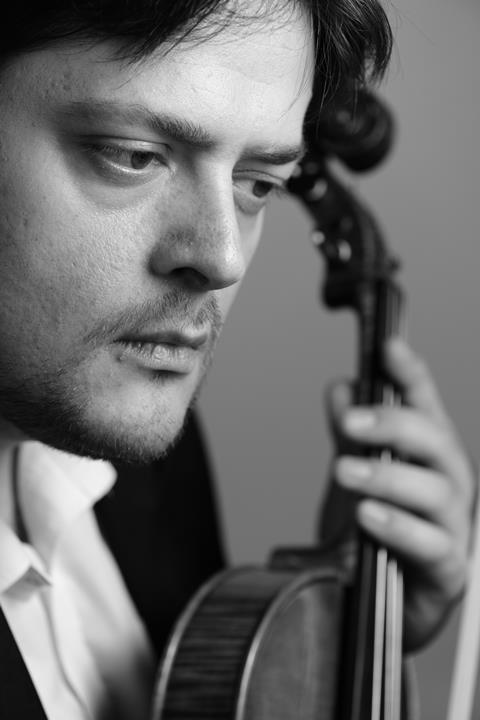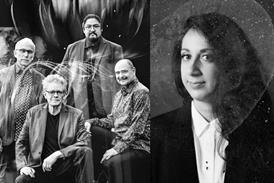What makes this concerto unique and challenging? Violist/violinist Yuri Zhislin delves into the simple, yet sophisticated musical language of the composer, ahead of an album release of Bartók’s works on 24 May

Discover more Featured Stories like this in The Strad Playing Hub
Ever since I first heard the Bartók Viola Concerto, I felt that it was, first and foremost, an acutely lyrical work, featuring the most beautiful and romantic material in Bartók’s oeuvre. To me, the biggest challenge when performing this concerto is to make sure that the vocal abilities of the viola are explored as far as possible within the technical capabilities of the instrument.
Much of the melodic material is written in the high positions on the A string; I always attempt to extract the naturally bright tone of viola’s upper register, while taking care not to force the sound too much on the high notes and maintaining the intensity where necessary. It is also paramount for the vibrato to be treated with utmost attention, especially on these high notes. Such delicate vibrato enhances the beauty of the melody, while its excessive use might eclipse the subtle colours of the melodic material.
Throughout the first movement, the fast runs culminate in the lyrical ending of the phrases. It is of the utmost important to bring that to the fore. The first such episode starts at the first of the five-four bars, with an intensely expressive theme played on the top A string, followed by a mirrored melodic line a bar later on the C string, and finishing with a beautiful melody at to round off the four-bar unit. It is easy to forget to switch to a lower gear, but the potential to explore and bring out Bartók lyricism is so great in moments such as these.
To me, one of the main technical challenges in this work is to maintain a clear stroke in the fast runs throughout the Concerto, and to ensure that the sound in the semiquavers is always clear and never forced. This especially applies to the material in the third movement. To work on that, as part of the rehearsal process I usually slow the tempo down to the point at which I can comfortably play the semiquavers on the string, in the middle of the bow, with a soft and delicate sound. This gives me an opportunity to refine the tone in the semiquavers and make technical and tonal adjustments as necessary.
One of my favourite things about this Concerto is the fact that Bartók explores, and challenges, the viola as a solo instrument, pushing its boundaries, but never stepping over the edge. Despite being a fine pianist (I have recently discovered an amazing recording of the Beethoven’s Kreutzer Sonata played by Joseph Szigeti with Bartók on piano), he knew all the subtleties that the string instruments can offer and didn’t hesitate to exhibit them through his compositions. Bartók died soon after having completed the solo line and having made preliminary sketches of the orchestration, which was in turn completed by Tibor Serly. William Primrose, who commissioned the work, furthered the collaboration with his edits to the solo viola line, and the result is one the most significant and enduring works in the viola concert repertoire.
In my latest album, in which the concerto is paired with the Bartók Violin Concerto and Rumanian Dances, the vision for an exhibition of the lyrical music of Bartók comes to fruition. The uniqueness of these two works lies in Bartok’s ability to portray such contrasting characters in a relatively concise format of a Concerto. Also, the Violin Concerto represents composer’s early years (the First Violin Concerto was written when he was just over 25 years old) while the Viola Concerto is the very last work that he wrote before passing away in 1945. I was asked many years ago by Maximiliano Valdes to play the Violin Concerto No.1 with the Asturias Symphony Orchestra in Spain, of which he was an artistic director at the time. I felt that Rumanian Dances, for which I have adapted the orchestral part, would be a fitting finishing touch for this album.
With both the Violin and Viola concertos, the first thing I explored was the tonal language that Bartók used in both works. They are of course technically challenging, but my approach to that was no different from the other new repertoire that I work on: get to know the material as well as possible, listen to as many versions as there are available, then begin with slow practice to metronome, making sure that the processes of delivering it are becoming established both in terms of musicality and technique. There are plenty of challenging sections in both of these concertos, and in order to tackle these technical aspects, I always try to treat any technical runs as if they were lyrical melodies, so that not a single note within the run sounds like a mechanical element, and so the vocal qualities integral to this music are preserved.
I have wanted to learn, perform, and latterly, record the Viola Concerto for as long as I have been studying the instrument. Bartok’s genius explores a full range of this beautiful instrument in a simultaneously simple and sophisticated language.
Yuri Zhislin’s album Bartók will be released on 24 May 2024 on Orchid Classics
Read: Practice Diary: violinist Yuri Zhislin
Read: Yuri Zhislin on the 6 pillars of violin playing
Read more Featured Stories like this in The Strad Playing Hub
The number one source for playing and teaching books, guides, CDs, calendars and back issues of the magazine.
In The Best of Technique you’ll discover the top playing tips of the world’s leading string players and teachers. It’s packed full of exercises for students, plus examples from the standard repertoire to show you how to integrate the technique into your playing.
The Strad’s Masterclass series brings together the finest string players with some of the greatest string works ever written. Always one of our most popular sections, Masterclass has been an invaluable aid to aspiring soloists, chamber musicians and string teachers since the 1990s.
American collector David L. Fulton amassed one of the 20th century’s finest collections of stringed instruments. This year’s calendar pays tribute to some of these priceless treasures, including Yehudi Menuhin’s celebrated ‘Lord Wilton’ Guarneri, the Carlo Bergonzi once played by Fritz Kreisler, and four instruments by Antonio Stradivari.






































No comments yet